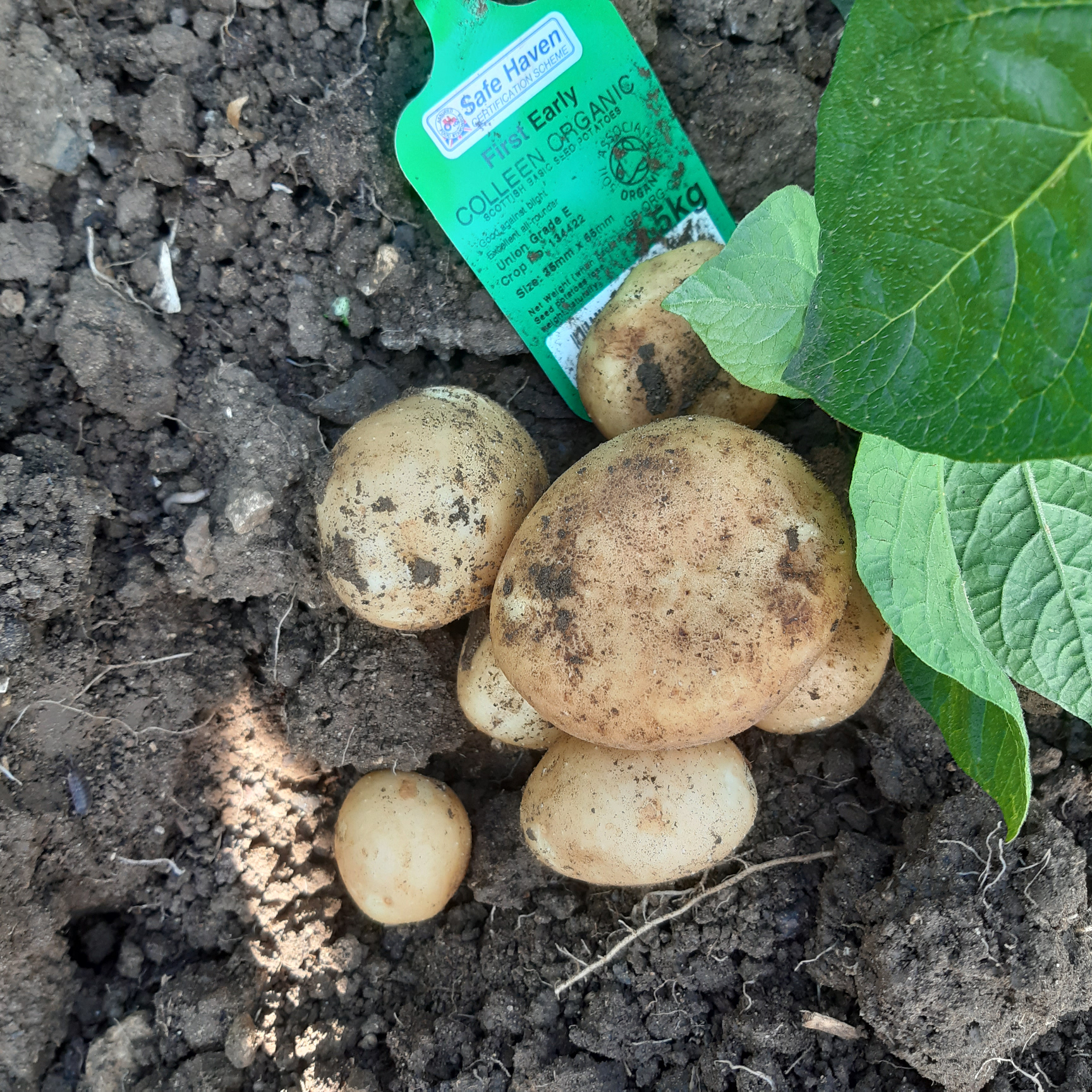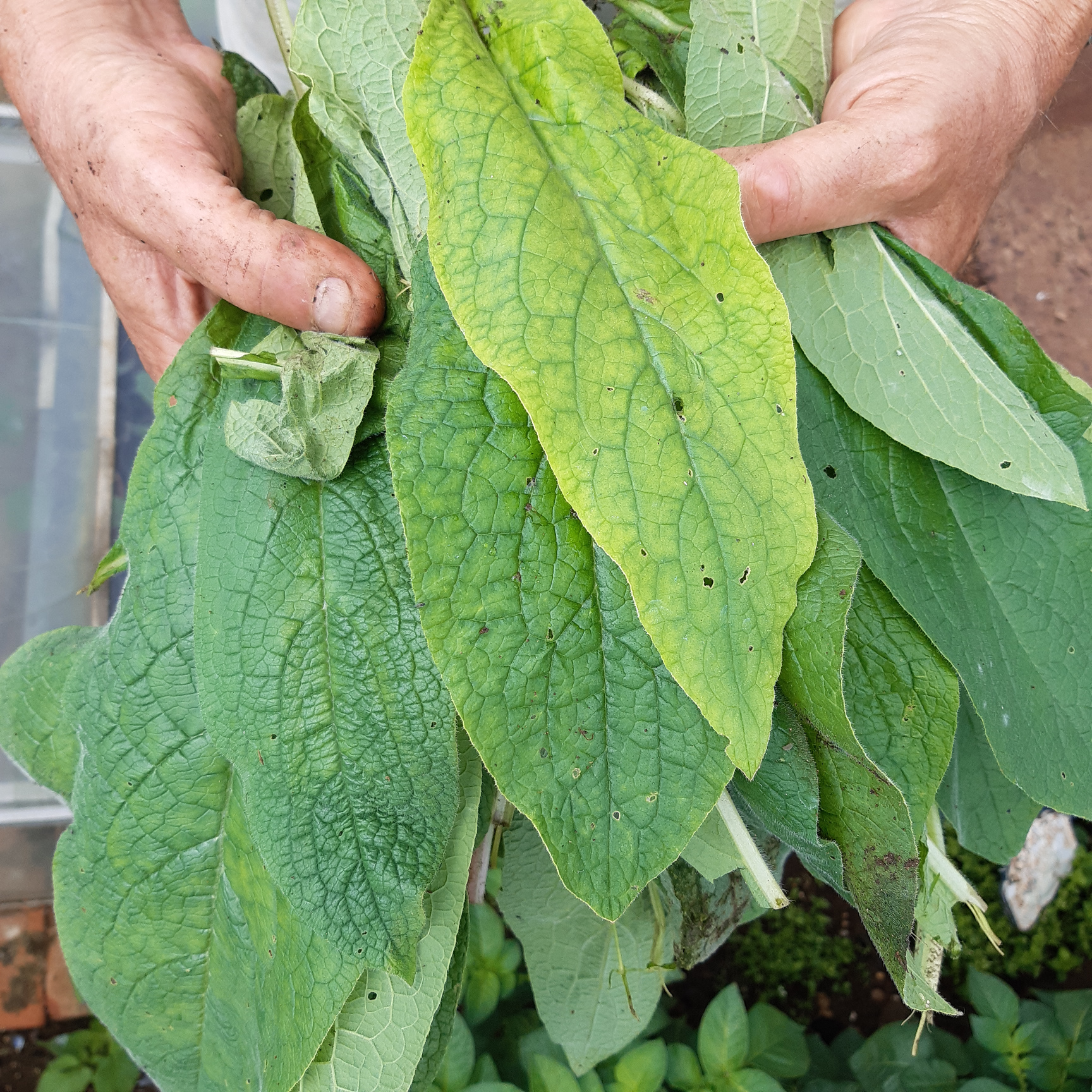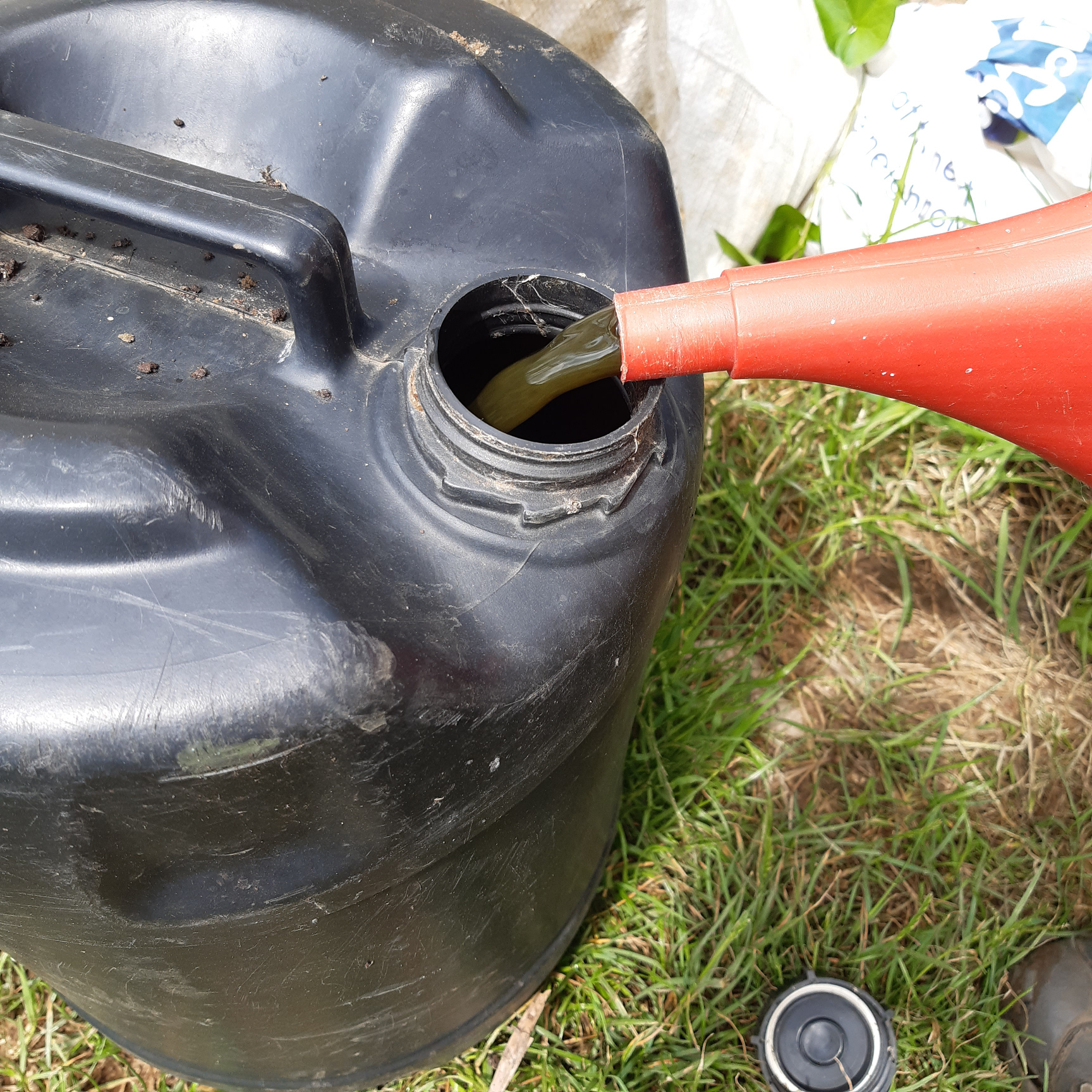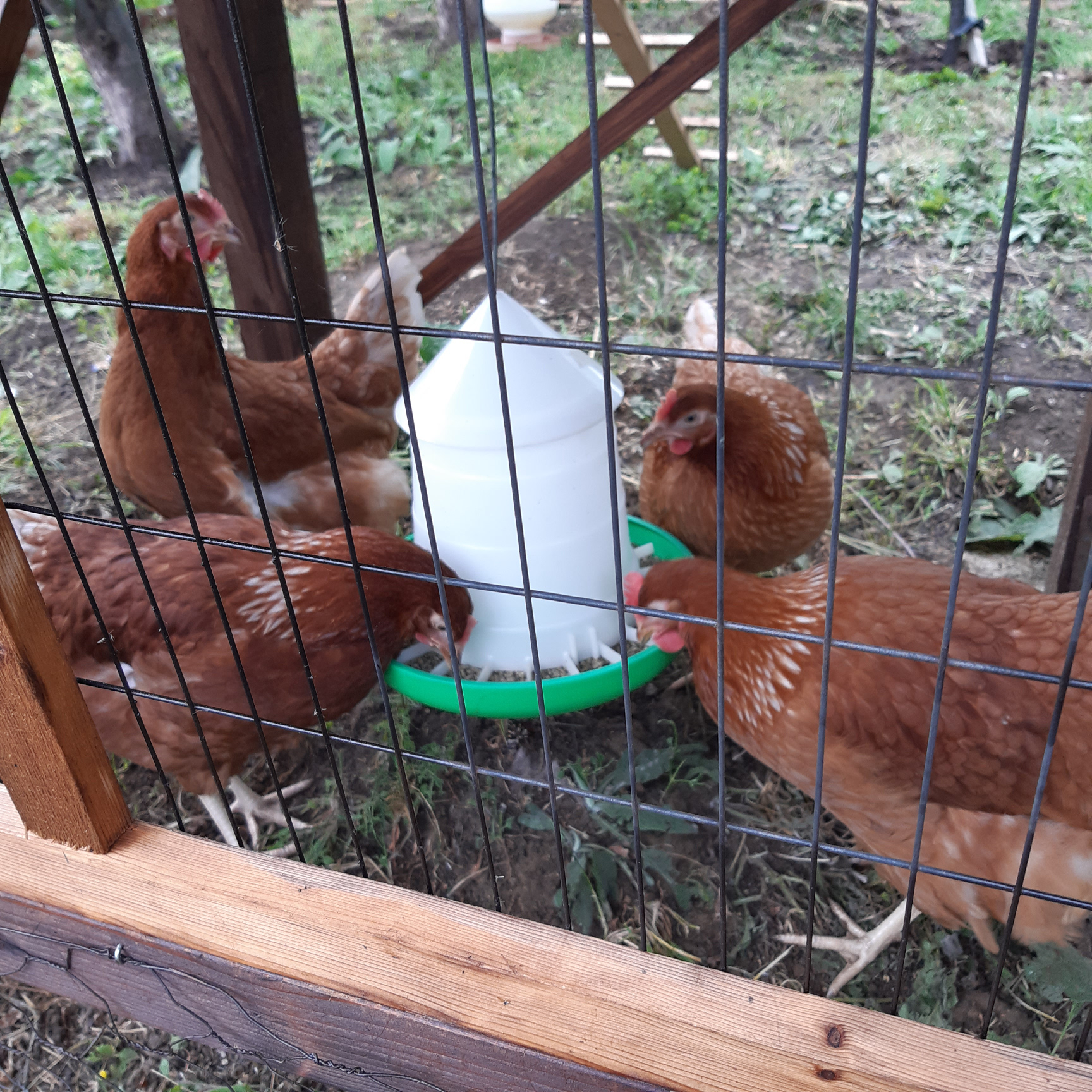The start of July is the time when the allotment holder can finally satisfy their impatience to lift new potatoes. Planted in early April, first early potatoes need about 90 days in the ground before harvesting so from July onwards it’s a treat to finally plunge the fork into the ground and with a slight wiggle and a shake, lift up a mound of soil containing a clutch of clean, white, new potatoes. With fragile skins, they are best quickly rinsed off, dropped into a pan of boiling water for about 5 minutes or so then dressed with olive oil and fresh mint for the perfect allotment snack! I have, for the last few years, settled on growing the first early variety ‘Coleen’ which is organically produced by our supplier and has good resistance to a number of the common potato diseases and pests.

Regular readers will have deduced by now that we follow organic methods as far as possible on our allotment – no artificial pesticides, herbicides or artificial fertilisers where possible. In addition to this we have for some years now been mainly following the ‘No-Dig’ method of cultivation – where the allotment is divided into beds of 4 foot wide (that’s about 1.3 metres), and the soil is never dug or trodden on at all; just liberally dressed with a layer of compost from time to time. Now, cultivating potatoes has always involved digging and disturbing the soil both at planting and harvest time and that is still how we grow them but this year, as an experiment, we took some of the seed potatoes and planted them in a no-dig bed, lightly covered with soil to see how it would work – the results will be out on a few weeks time…
One of the ways to make use of natural fertilisers is to make comfrey ‘tea’. Not for human consumption, this involves taking comfrey leaves and soaking them in water until the mixture turns foul smelling and black. The liquid is then poured off, stored in a drum (with the lid firmly on) and used when watering. Tests have shown that it contains more Nitrogen than farmyard manure and significantly more potash making it a great feed for tomatoes.


The newly acquired chickens are thriving not only on layers pellets but on vegetable scraps and weeds from the allotment. A large quantity of the early pea plants now cleared to make way for borlotti beans gave the delighted birds a special treat earlier this week. We now have 3 hens laying out of the 4 and the main task at the moment is to protect some runner bean plants growing just by their enclosure from prying beaks which threaten to chew them to bits.

As the nights start to get longer now, thoughts turn towards planning the later summer sowings of crops such as spinach, swiss chard, fennel, pak choi and carrots which will stand through the autumn and hopefully early winter. Here, timing is everything; the crops need to be sown just at the right time so there is enough of the growing season left for them to mature but not so early that the crop matures long before the nights start to turn colder and everything slows down for the autumn.